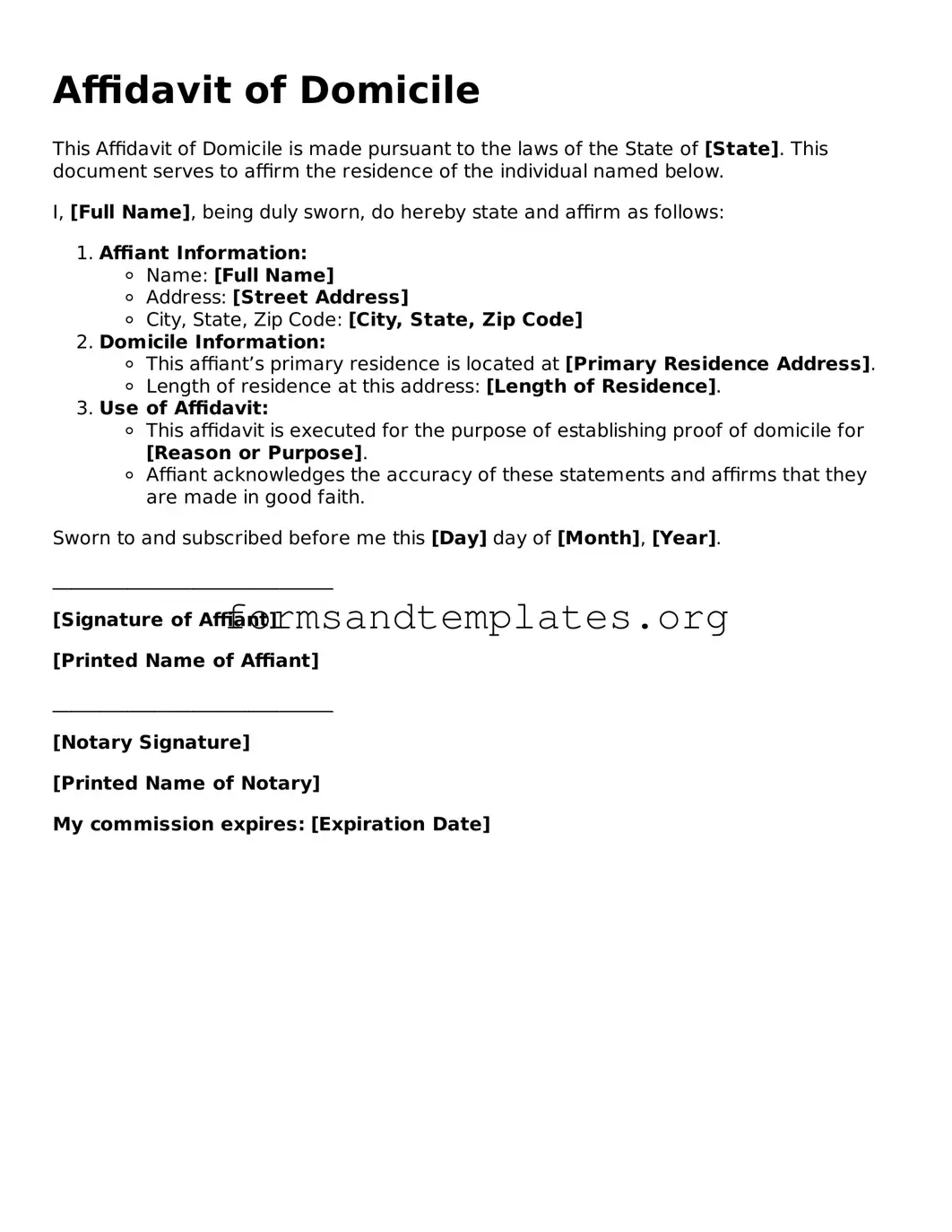Attorney-Verified Affidavit of Domicile Template
The Affidavit of Domicile is a legal document that confirms an individual's permanent residence at a specific location. This form is often used to establish residency for various purposes, such as estate administration or tax obligations. Understanding its importance can help ensure that your affairs are in order.
If you're ready to fill out the Affidavit of Domicile, click the button below to get started!
Access Editor Here
